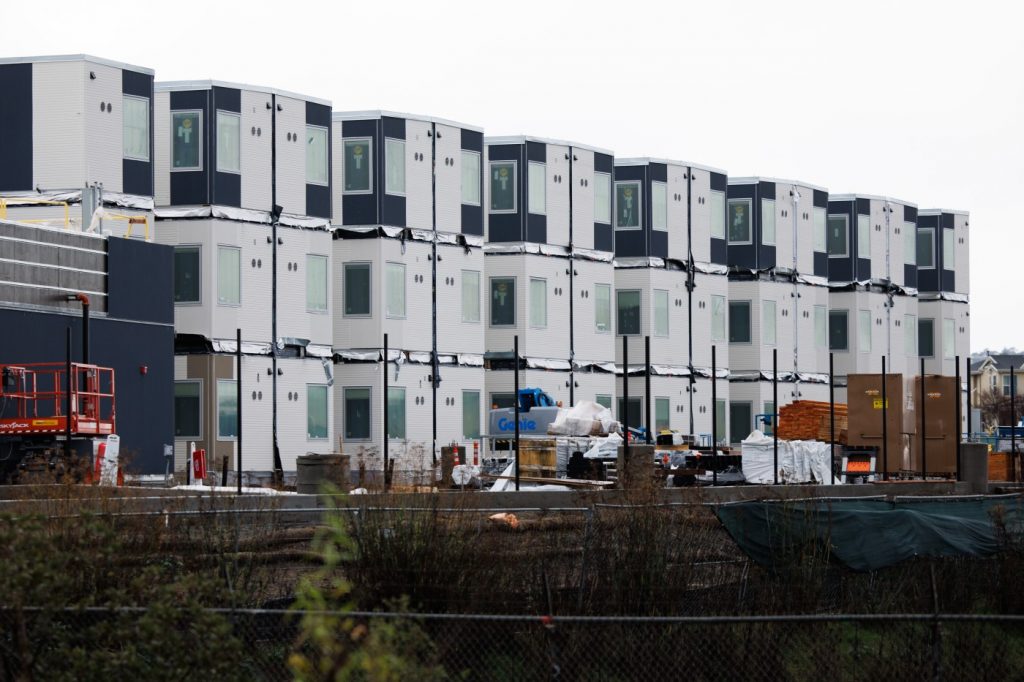San Mateo County’s homeless population spiked 18% over the last two years, according to the latest official estimate, even as local officials added around 300 shelter beds to help people get off the street.
The tally released Wednesday identified 2,130 homeless people countywide. More than half lived outdoors, in vehicles or in other places not meant for habitation. The rest stayed in shelters.
Despite the increase, local officials credited the opening of two shelters in Redwood City and San Mateo with boosting the number of homeless people with a roof over their heads. The county found 985 people were staying in shelters, a 38% jump from 2022.
“This means fewer individuals in less safe situations such as on the street or in tents,” Claire Cunningham, director of the county’s Human Services Agency, said in a statement. “And shelters provide case management and supportive services to help residents move toward permanent housing.”
The new numbers stem from the county’s latest biennial “Point-In-Time” homelessness census, taken by a team of volunteers and service providers on a single night in January.
Across the Bay Area, Alameda, Contra Costa and San Francisco counties also conducted counts early this year. Alameda County recently reported its homeless population had dipped by 3% to 9,450 people, though Oakland’s population swelled by 9%. San Francisco, meanwhile, saw its number of homeless residents rise 7% to more than 8,300.
Contra Costa County’s numbers are expected soon, while Santa Clara County, which took its tally last year, will not count again until 2025.
The estimates, despite widely seen as an undercount, are crucial to helping cities and counties plan their homelessness response and determine how much state and federal funding they can expect receive.
Despite unprecedented billions of public dollars spent in recent years to combat homelessness, getting people off the streets remains a grave challenge as rising housing costs, job losses, and mental health and addiction issues force others out.
Related Articles
One San Jose tiny home shelter is successfully moving people to housing. Can it be a model for other sites?
Potential tough-on-crime California ballot measure promises less homelessness. Experts aren’t convinced
San Mateo County to launch mental health ‘CARE Court’ to bring homeless people off street
Santa Cruz County a case study on pandemic Project Roomkey
Oakland’s homeless population rises 9%, Alameda County population dips 3%
Since 2017, San Mateo County’s homeless population has risen 70%, mirroring a broader statewide increase over the past decade. Still, county officials said they are determined to achieve their goal of “functional zero” homelessness, meaning ensuring that when people fall into homelessness, they are quickly helped into shelter or housing.
“This confirms our work is never done and we remain committed to helping as many of our unhoused residents who are willing to accept it,” County Executive Officer Mike Callagy said in a statement.
Earlier this year, the county adopted an ordinance to levy criminal penalties against homeless people who refuse shelter, though only for those in unincorporated areas, an estimated 114 residents. Homeless people sometimes turn down shelter for a range of personal reasons, from health and safety concerns to a reluctance to follow curfews. County officials say they hope the ordinance, which homeless advocates have condemned as cruel, can be a model for cities throughout the Peninsula.
Across San Mateo County, the count identified 1,145 homeless people without shelter, a 5% increase from 2022. Of that number, 70% lived in their cars, vans or RVs. The rest of those identified as homeless had some type of shelter.
Redwood City, where the county opened a 240-unit shelter and navigation center last year, had the most homeless residents with 189, down from 245 two years ago. Pacifica had the second most with 180, followed by San Mateo with 95.


